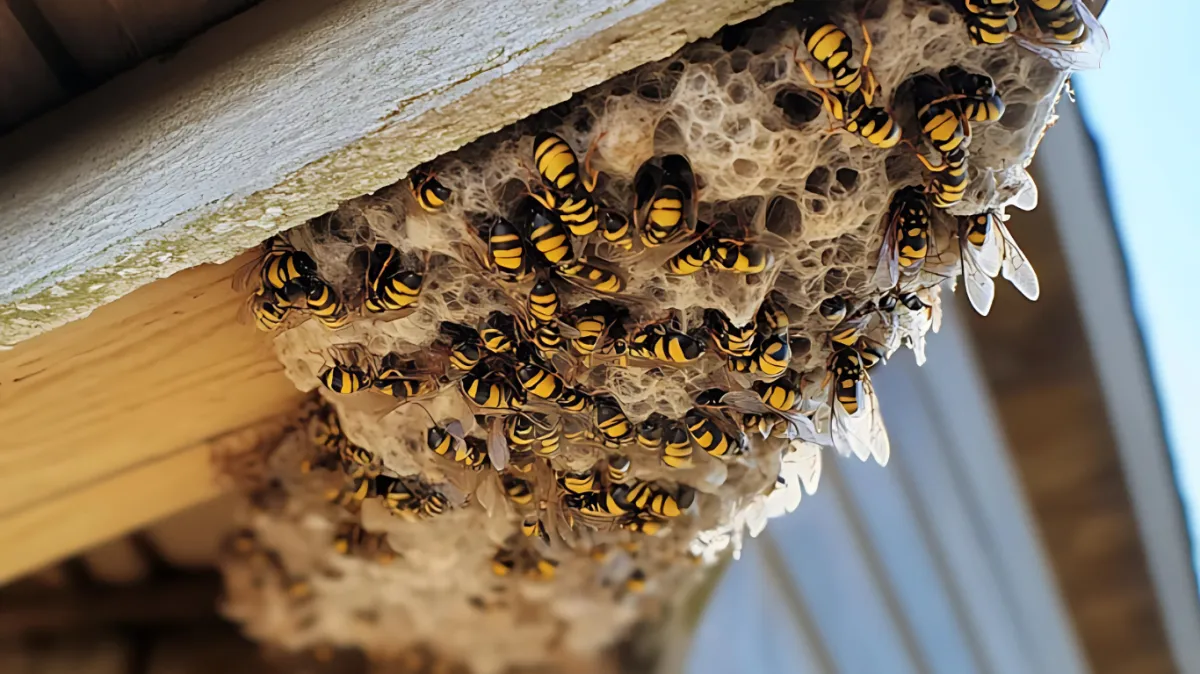
Safeguarding Summers from Wasps and Hornets in Victoria, BC
Understanding Wasps and Hornets in Victoria
Wasps and hornets are common in Victoria, BC, where the mild climate creates ideal conditions for these insects to flourish. Understanding their habitats and behaviors is crucial for managing their presence effectively and safely. Here are key points to consider:
1. Habitat Preferences:
Nesting Sites: Wasps and hornets typically build their nests in sheltered areas such as under eaves, inside attics, or amidst dense foliage. In residential areas, they may also choose loft spaces, garages, and wall cavities.
Environmental Conditions: These insects prefer warm, dry locations that are close to food sources, which in urban settings can include human food waste and garden insects.
2. Behavioral Traits:
Territorial Nature: Wasps and hornets can become aggressive if they perceive a threat to their nest. Their territorial actions mean that even innocent proximity can provoke them to attack.
Foraging Patterns: These pests are active during the day and are attracted to protein-rich foods in the spring and sugary foods later in the summer, which often leads them into human-populated areas.
3. Risk Factors:
Sting Hazards: Both wasps and hornets can sting multiple times. Their stings inject venom that can cause pain, swelling, and, in allergic individuals, severe reactions such as anaphylaxis.
Allergic Reactions: It is essential for individuals, especially those known to have allergies to insect stings, to exercise caution during the active months of these pests. Immediate medical attention may be required if a severe allergic reaction occurs.
Early Detection and Nest Identification
Early detection is crucial in managing wasp and hornet populations effectively, minimizing the risk of stings and infestations around your home in Victoria, BC. Here's how to identify and respond to these pests efficiently:
1. Signs of Nests:
Visual Confirmation: Keep an eye out for the physical presence of nests, which often appear as grey or brown structures made from a papery substance. These can be found in protected and secluded areas such as under eaves, inside attic vents, or tucked away in garden sheds.
Increased Activity: Notice increased wasp or hornet activity, especially in particular areas of your garden or home. Seeing these insects frequently flying to and from a spot can indicate the presence of a nest nearby.
2. Common Nesting Places:
Under Eaves and Overhangs: These areas provide shelter from elements, making them ideal for wasps and hornets.
Behind Shutters and Soffits: These insects often choose these hidden spots to build their nests away from direct human contact.
Inside Bushes, Shrubs, and Trees: Dense foliage offers protection and a prime location for these pests to thrive unnoticed until the nest becomes significant.
3. Professional Inspection:
Expert Assessment: Technicians from Pest in the City are trained to safely assess and identify wasp and hornet nests, even in hard-to-reach locations. This professional evaluation is vital to determine the best approach for removal.
Customized Treatment Plans: Based on the severity and location of the nest, Pest in the City will develop a tailored strategy that may involve physical removal, insecticidal treatment, or a combination of both to effectively manage the infestation.
4. Preventive Measures and Advice:
Follow-Up Checks: After the initial removal, it’s wise to arrange for follow-up inspections to ensure no new nests are forming in previously treated areas.
Educational Tips: Pest in the City provides homeowners with preventive tips and modifications they can implement to discourage future wasp and hornet activity, such as sealing entry points and maintaining a clean yard free of food debris.
Safe Removal Practices
Ensuring the safe removal of wasp and hornet nests is critical to prevent stings and recurring infestations. At Pest in the City, we prioritize effective and secure methods to handle these potentially dangerous situations:
1. Expert Removal:
Controlled Techniques: Our specialists are equipped with the right tools and protective gear to safely approach and remove wasp and hornet nests. Techniques such as using extendable poles for high nests or specialized vacuums help ensure that the process is safe for both the technicians and the residents.
Chemical Treatments: When necessary, we use approved insecticides that are effective against wasps and hornets but have minimal impact on the environment and non-target species. These treatments are carefully applied to target only the intended pests.
Immediate and Complete Removal: Our goal is not just to remove the nest but also to ensure that all traces of pheromones and attractants are eliminated to prevent new colonies from forming in the same locations.
2. Post-Removal Site Cleanup:
Debris Disposal: After the nest is removed, all associated debris is carefully cleaned up and disposed of to avoid attracting other wildlife or pests to the area.
Sanitization: We sanitize the area where the nest was located to remove any chemical traces or lingering pheromones that could attract new wasps or hornets.
3. Preventative Measures:
Landscape Modifications: We advise on landscape changes such as reducing flowering plants that attract these pests and maintaining shorter grass to minimize shelter opportunities.
Structural Repairs: Sealing off potential entry points like cracks in siding, loose roofing tiles, and uncapped chimneys can significantly reduce the chances of wasps and hornets nesting near human activity areas.
Don't let wasps and hornets ruin your summer fun. Contact Pest in the City today to schedule a consultation, and take the first step towards a safer, more enjoyable outdoor season in Victoria, BC.